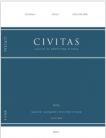KAKO MATURANTI PROCENJUJU ZNAČAJ I U KOJOJ MERI POSEDUJU KLJUČNE KOMPETENCIJE ZA CELOŽIVOTNO UČENJE2
THE PERCEPTION AND DEGREE OF KEY COMPETENCES
FOR LIFELONG LEARNING AMONG SECONDARY SCHOOL
STUDENTS
Author(s): Olivera VukovićSubject(s): Education
Published by: Fakultet za pravne i poslovne studije dr Latar Vrkatić
Keywords: competences; lifelong learning; career
Summary/Abstract: Lifelong learning is a continuous daily activity of an individual with the aim to gain or improve knowledge, skills and competences related to their personal, civic, social or professional activities (EU, 2000). Key competences are defned as a multifunctional set of knowledge, skills and attitudes that all individuals need for their personal development, social inclusion and employment. In 2006, the European Union made a recommendation on key competences for lifelong learning. Te aim of this paper was to examine how secondary school students in their fnal year assess the importance and degree to which they have eight key competences for a successful career, as well as their relationship. Te study was conducted on a sample of 230 fnal-year students. For the purpose of the research, the USDU scale (Vuković, 2014) was constructed (Likert-type, containing 31 items, scale reliability alpha = 0,925). According to the results obtained, the students attach the highest importance to the digital competences and communicating in foreign languages. Te lowest importance is attached to the mathematical, scientifc and technological competence, as well as cultural awareness and expression. Assessment of degree of competence has a similar profle, but values are lower than those of importance. Te relationship between estimation of importance and degree of possession is of medium intensity and is signifcant at the level of 0.01.
Journal: Civitas
- Issue Year: 8/2018
- Issue No: 01
- Page Range: 60-75
- Page Count: 16
- Language: Serbian

